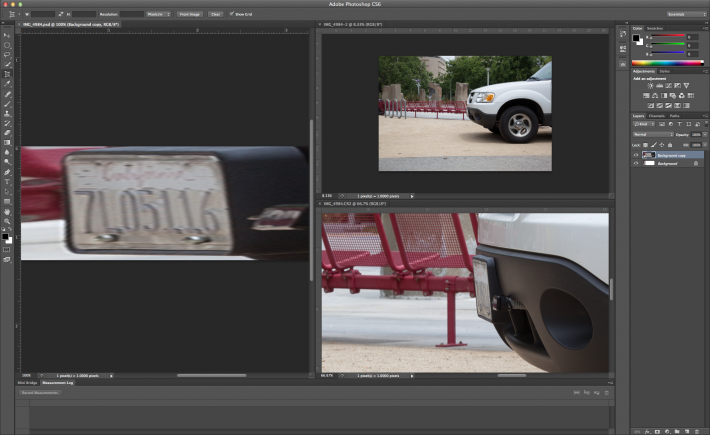Though we all are pretty familiar with how Photoshop has helped make us better photographers and digital artists, what we don't often think about is how the program has affected non-artistic segments of society. Today, in honor of National Police Week, Adobe has decided to show how law enforcement uses Adobe Photoshop to help combat crime. It's the kind of thing we all have seen on the television series CSI for years, but never really believed was real. Though the video is a couple months old, the conversation with John Penn II was released today.
The below is a part of an interview with John Penn II, Adobe's Senior Solutions Architect, found on Adobe's blog and republished here with permission.
---
In what ways does Photoshop technology help law enforcement?
John: Cameras have become an integrated part of our society. They are carried in our pockets and mounted to walls. As a result, crimes are more and more frequently captured in images and video. In daily life it's no longer uncommon to see images or video of a crime in progress played on the news. Law enforcement would like to leverage that evidence to solve crimes. But sometimes, the critical clues are locked away behind sensor noise, poor lighting, blurry images or are in minute and hard to see details. Photoshop is a powerful tool in the hands of trained law enforcement, which can assist them in getting crucial information from digital media.
Of course, beyond working with image evidence, there are many other tools in Photoshop that are useful to law enforcement. Photoshop is used in a wide variety of forensic sciences including document forensics, working with fingerprints and processing other kinds of evidence.
What types of crimes do you help solve or prevent with digital imaging?
John: Digital imaging is important to a wide variety of law enforcement work. It's used in the analysis of photos that law enforcement takes when investigating a crime scene. It's used in different ways when separating a fingerprint from a complex background in a digital image in a forensic lab. In investigating crimes against children it's used in different ways. Each type of crime and each investigator will have different techniques at their disposal to investigate the crime at hand.
Can you tell a story or provide a specific example of a time that the technology in Photoshop helped solve a crime and/or save a life?
John: Because of the nature of the work, as well as legal and privacy concerns, I can't give a specific example. But I can generally say that there are many examples of Photoshop and other Adobe tools like Premiere, Audition and Acrobat used to help solve crimes and save lives. I'm incredibly proud of the tools we develop and the innovation and care that's put into them. I've seen Photoshop put to incredible use, and along with great police work, rescue the most innocent victims from some of the worst crimes imaginable.
Can you share any insight into new technology you're developing to benefit law enforcement?
John: I can share insight into the thought process behind the new tools we're developing. For me understanding the investigative challenges and the role technology plays in the commission or solving of the crime, is critical to the development of useful tools. For example, understanding what happens to a photo in the various stages of its lifecycle, from camera to evidence, can make all the difference between a tool that works well in the lab, and one that works well in the field.
How do you see the relationship between Photoshop and law enforcement advancing as technology improves?
John: I see the work with law enforcement as an ongoing partnership. I think it's critical that we understand the challenges law enforcement faces, especially in investigating crimes against children. I expect that as we come to better understand those challenges we will continue to develop tools that will help them be successful in their mission.
I feel like I have the best job at Adobe, because I get to sit right in the middle of that relationship. At Adobe I live and work with the amazingly talented and creative folks on the Photoshop team and other teams at the company. But I also have the opportunity to work with the incredibly dedicated folks in law enforcement and other organizations like NCMEC, who are constantly working to keep our communities and children safe.
---
For the rest of the interview, head over to Adobe's blog.







I remember a few years ago when Interpol was floating a photo of a child that had been sexually abused by a man in Vietnam (perhaps Cambodia). The man had obscured his identity in the photos, some of which were purportedly graphic, by smearing his face in Photoshop. Interpol brought those images back to Adobe and they were able to reverse the process and restore the pixels to nearly their original state. Now, he's behind bars.
http://thelede.blogs.nytimes.com/2007/10/08/interpol-untwirls-a-suspecte...
Something like this?
https://www.youtube.com/watch?v=KUFkb0d1kbU